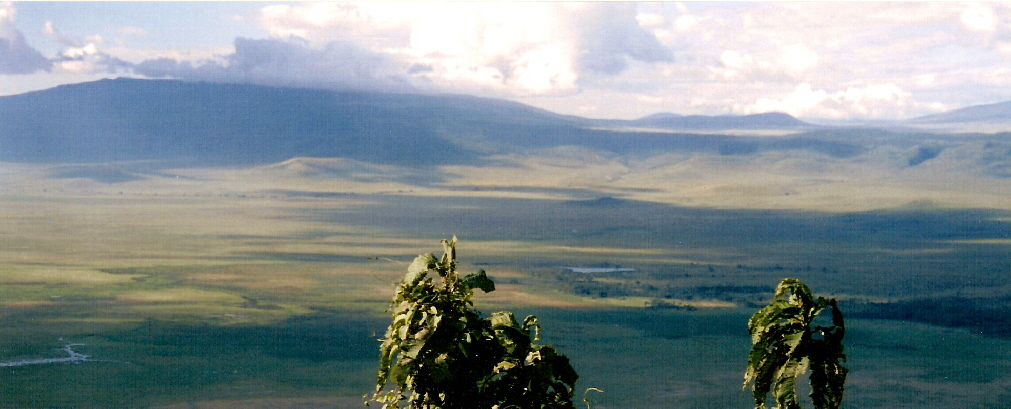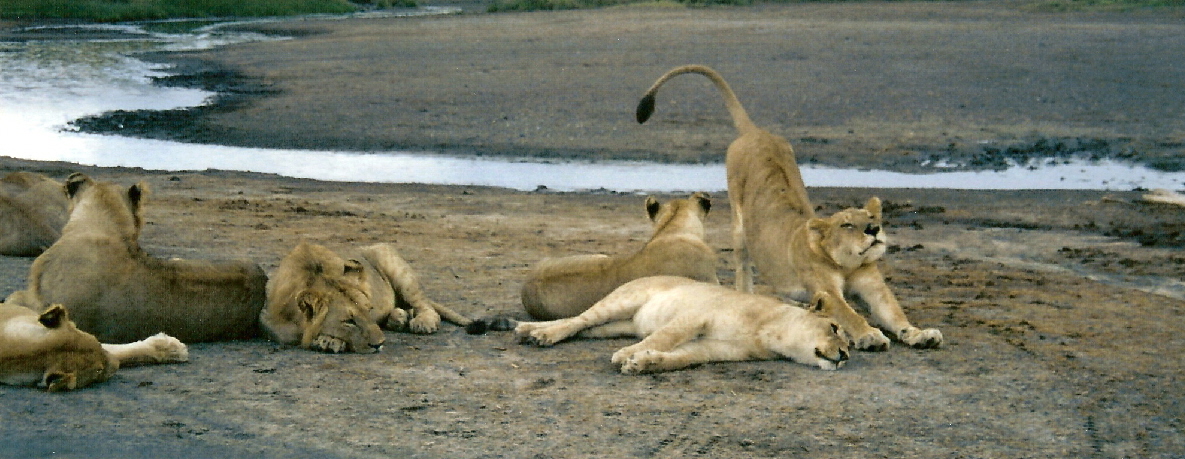Tanzania is considered by many experts as the best safari destination in Africa on par level with Botswana. Tanzania offers a good compromise between the Kenyan easy sightings and the authenticity of southern african safaris. Tanzania chose to implement a luxury tourism policy by imposing high park fees in order to avoid overcrowding. Tanzanian wildlife is similar to the one you find in Kenya and sightings are as easy to come by. However and contrary to Kenya, the Tanzanian parks are usually bigger (except Ngorongoro) allowing for a better distribution of tourists which means that you can enjoy the sightings in relative peace. There are three main safari circuits in Tanzania. the northern one along the Kenyan border, the southern one, some kilometers away from Dar-es-Salaam and the western one not far away from the Zambian border. The northern circuit includes Manyara, Tarangire, Serengeti and the Ngorongoro. It is by far the most travelled.
The southern circuit is lesser known comprising the Selous, the Ruaha and the reserve of Mikumi. There is as much widlife in the South as there is in the North if not more, even though it is a bit more scarce and thus more difficult to observe. This is due to the fact that animals in the South are less used to vehicles than in the North. One of the major attractions in the South is the presence of species you do not find in the Northern parks including Aifrican wild dogs, kudus, roan and sable antelopes which are more typical of Southern Africa. Another major asset is the absence of other tourists which gives you a feeling of solitude. This circuit is particularly recommended for those in search of authenticity and evasion. As such, the southern parks offer a very similar experience to the Southern African parks.
The western circuit is even wilder and includes the Katavi National Park, a little gem which is very rarely visited and the parks of Gombe and Mahale which are famous for their chimpanzees.
Whatever circuit you choose, you are in for a treat!
MANYARA
Manyara’s main attractions lie in its lake and the richness of its avifauna, the fauna being slightly less diverse than that of the neighbouring parks. Yet you can still observe with relative ease elephants, hippos, buffalos, impalas, baboons and dik diks. You need a bit of luck to see the famous Manyara tree climbing lions or the guereza colobus in the wet forest at the parks’ entrance.
Pros:
- avifauna
- flamingos
- the scenery
- good introduction to Tanzania’s wilderness
Cons:
- the predators' scarcity, including lions
- the absence of cheetahs
Sightings frequency in Manyara
Almost guaranteed sightings: baboons, dik-diks, waterbucks, elephants, buffalos, hippos, crocodiles, zebras, impalas
Frequent sightings: wildebeests, jackals, warthogs
Random sightings: lions, spotted hyenas, jackals
Exceptional sightings: leopards, African wild dogs, bushbucks
NGORONGORO CRATER
One of the most extraordinary site on the surface of the Earth. The Ngorongoro is an inactive volcano, the collapsed crater of which serves as a refuge to an incredible number of animals. All the usual mammals of the African savannah can be found there except the giraffe, the impala, elephant cows and calves. The Ngorongoro is also one of main sanctuary for the black rhino and one of the best places in Africa to see spotted hyenas. All the major African predators in Africa are easily spottable here at the exception of the leopard which can sometimes be seen the Lerai foret. The small size of the Ngorongoro and its fame explain why the concentration of safari vehicles is so strong inside the crater. Yet this is a minor inconvenience as regard the site's many assets.
Pros:
- The sheer beauty and originality of the place
- The exceptional density of animals present in the crater
- Great number of predators especially spotted hyenas
- One of the best place to see black rhinos
Cons:
- great concentration of safari cars
- Too few roads, the animals are sometimes very far
- Prohibitive entry fees
- Absence of giraffes and impalas
Sightings frequency in the Ngorongoro crater
Almost guaranteed sightings: Bull elephants, spotted hyenas, lions, wildebeests, Grant gazelles, buffalos, zebras, ostriches, hippos, vervet monkeys
Frequent sightings: baboons, hartebeests, black rhinos, jackals, warthogs, elands
Random sightings: waterbucks, leopards, cheetahs
Exceptional sightings: servals, reedbucks
SERENGETI
One of the oldest and most famous game sanctuary in Africa, the Serengeti is arguably a must do. It shares exactly the same features with the Masai Mara which is none other than the Serengeti’s extension in Kenya. The wildebeests’ migration is as spectacular as in the Mara, and the other species of herbivores are present in high numbers. Predators are frequently seen, even leopards and with a bit of luck you can even witness them hunting. On my last visit, I saw a cheetah catch a Tommy and shows up its legendary speed. The big 5 (lion, leopard, elephant, rhino, buffalo) is present in the park but rhinos may be very hard to find if there are some left at all. With a superficy of more than 14 000 km2, the park allows for a better distribution of the touristic flow. As a result, the harassing to which great cats are subjected to in the Mara is somewhat mitigated. However, some sections of the Serengeti such as the Seronera are much more crowded.
Pros:
- Migration of wildebeests in July-August
- Strong density of herbivores
- Lions omnipresence
- Other predators are easily sighted: cheetahs, sported hyenas, leopards
- The nice scenery
Cons:
- Scarcity of rhinos and wild dogs
- Absence or extreme scarcity of greater kudus and sable antelopes which used to be present in a far away past
Sightings frequency in the Serengeti
Almost guaranteed sightings: lions, elephants, giraffes, impalas, Grant and Thompson gazelles, buffalos, waterbucks, hippos, crocodiles, wildebeests, zebras, warthogs, baboons, vervet monkeys
Frequent sightings: spotted hyenas, cheetahs, leopards, hartebeests, diks-diks, elands, jackals, topis
Random sightings: bushbucks, reedbucks
Exceptional sightings: honey badgers, civets, caracals, servals, wild dogs, striped hyenas, black rhinos, greater kudus? Sable antelopes?

